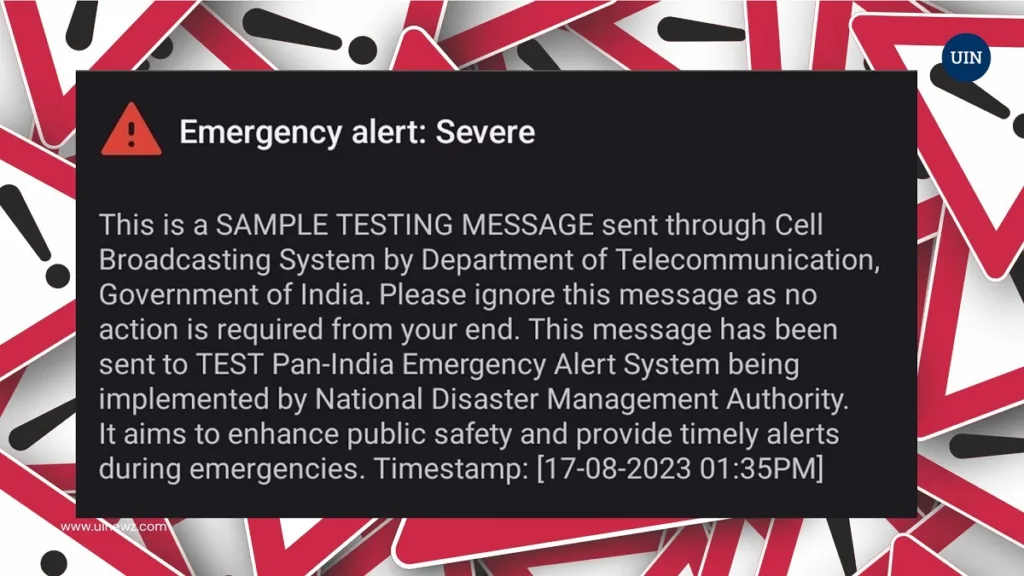
India's Smartphone Users Receive Unexpected 'Emergency Alert: Severe' – Government Tests New Alert System for Safety! Here’s What You Need to Know
On a Friday morning, Indian smartphone owners were surprised by an unexpected government alert. However, this notification wasn’t a reason for immediate alarm. Instead, it was part of the National Disaster Management Authority’s (NDMA) efforts to evaluate the performance of India’s recently introduced emergency alert system. Sent as a test message labelled “emergency alert: severe,” it was dispatched to randomly selected mobile devices nationwide. Upon receipt, the phones emitted a loud beep and displayed a flash message.
The Emergency Alert Tests
The Department of Telecommunication (C-DOT) played a crucial role in conducting these tests, using the Cell Broadcasting System to deliver the messages to mobile users. The message clearly stated that it was a test and that no action was required from recipients. Additionally, the message provided information about the purpose of the test and its significance in enhancing public safety during emergencies.
These tests are not isolated occurrences but part of a series aimed at evaluating the emergency warning broadcast capabilities of mobile operators and cell broadcast systems. The Department of Telecommunications plans to conduct similar tests periodically in different regions to ensure the system’s effectiveness.

The Technological Development
Rajkumar Upadhyay, the Chief Executive Officer of C-DOT, highlighted the ongoing efforts to develop cell broadcast technology internally. Currently reliant on a foreign vendor, the Indian government is working towards self-sufficiency in this crucial technology. Cell broadcast technology is pivotal in sending alerts directly to mobile phone screens during disasters and emergencies.
Upadhyay also emphasized the need to develop various versions of cell broadcast messages for propagation through the telecom network, indicating a commitment to adapt and improve the system continually.
The Purpose of the Emergency Alert System
The main purpose of the emergency alert system is to notify smartphone users about critical situations, such as natural disasters such as earthquakes, tsunamis, and flash floods. Android users can personalize their alert settings, providing them with more authority over the information they receive during emergencies.
It’s essential to emphasize that these test messages are solely intended for assessment and should not trigger alarm among recipients. They serve as a means to refine the emergency alert system, guaranteeing its optimal performance when genuinely required.
The Importance of Emergency Alerts
The government’s decision to conduct these tests underscores the critical role of timely alerts during disasters. Swift and efficient notifications to citizens can save lives and reduce the severity of emergencies. Hence, mobile users need to activate the emergency alert feature on their devices to guarantee they receive crucial notifications during a disaster.
In summary, India’s new emergency alert system represents a significant step forward in enhancing public safety during critical situations. The recent test messages, though unexpected, are part of a comprehensive evaluation process designed to fine-tune the system’s functionality. Through ongoing technological advancements and regular testing, India is dedicated to ensuring its citizens’ readiness and awareness during emergencies. This demonstrates the government’s unwavering commitment to safeguarding its people’s safety and welfare.






I wish to show thanks to you just for bailing me out of this particular trouble.As a result of checking through the net and meeting techniques that were not productive, I thought my life was done.